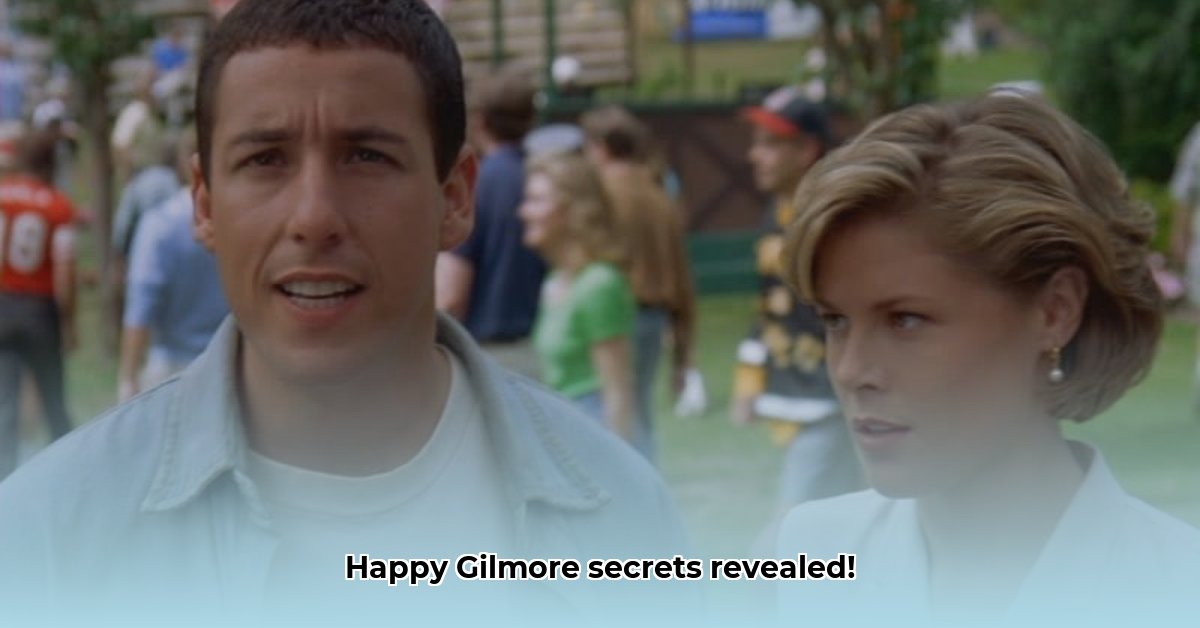
A Behind-the-Scenes Look at the Making of a Comedy Classic
Happy Gilmore, Adam Sandler's golfing comedy, wasn't just a fluke. Its success stemmed from a meticulously crafted production, blending a talented cast with a skilled crew working in perfect harmony. This article delves into the behind-the-scenes magic, revealing the individuals and departments that brought this unlikely sporting comedy to life. We’ll explore the logistical challenges and collaborative spirit that defined its production.
The Cast: More Than Just Adam Sandler
While Adam Sandler's lead performance as Happy Gilmore is iconic, the film's success hinges on a strong supporting cast. Carl Weathers brought his gravitas, while the unexpected casting of Bob Barker added a layer of comedic genius. Beyond the main players, the supporting cast, often overlooked, provided crucial depth, enriching the narrative and enhancing the film's comedic timing. Each actor played a vital part in creating the unique blend of sports and silliness that makes Happy Gilmore so memorable. How did the casting director manage to assemble such a diverse and effective ensemble? That’s a story in itself.
The Crew: The Unsung Heroes of Happy Gilmore
The on-screen talent is only half the story. Behind the camera, a dedicated crew worked tirelessly to bring the director's vision to life. Dennis Dugan, the director, served as the conductor of this comedic orchestra, ensuring the numerous moving parts functioned seamlessly. The cinematographer shaped the film's visual style, choosing angles and lighting to enhance the comedic impact. The editors, the unsung heroes of post-production, meticulously crafted the final cut, ensuring the comedic timing was precise and the narrative flowed smoothly. The sound and visual effects teams played crucial roles, bringing the film’s zany golf shots and slapstick moments to life with believable and hilarious results. Without their expertise, the film would lack its distinctive comedic punch.
Logistical Challenges: Herding Cats on a Golf Course
Producing Happy Gilmore, a blend of slapstick comedy, intense sports scenes, and surprising moments of heart, presented significant logistical challenges. Coordinating numerous departments and individuals required meticulous planning and seamless execution. Scheduling constraints, location scouting (finding suitable golf courses), and action sequences were significant hurdles. The production's complexity demanded flawless coordination, akin to orchestrating a complex symphony.
Key Departments and Their Contributions
The success of Happy Gilmore was a collaborative effort across several key departments:
- Directing: Dennis Dugan's leadership guided the production's creative direction, ensuring the film's comedic vision was realised.
- Cinematography: The visual style, including lighting and camera angles, contributed significantly to the overall comedic effect.
- Editing: The editors meticulously assembled the footage, ensuring the comedic timing was perfect and the story flowed seamlessly.
- Production Design: The sets and locations played a vital role in establishing the film's atmosphere and comedic tone.
- Sound: The sound design and mixing ensured the film's audio complemented the visual comedy.
- Special and Visual Effects: These departments brought to reality the film's more outlandish golf swings and slapstick moments.
Replicating the Happy Gilmore Success: A Recipe for Crew Excellence
What can we learn from Happy Gilmore's production to build similarly effective teams?
- Strong Leadership: A visionary director like Dennis Dugan is crucial for setting the overall tone and guiding the creative process.
- Collaborative Spirit: The film's success illustrates the power of collaborative teamwork, with all departments working together towards a common goal.
- Clear Communication: Effective communication among all team members is essential for smooth production.
- Meticulous Planning: Thorough planning and preparation are paramount for addressing logistical challenges.
- Talent Acquisition: Assembling a highly skilled and experienced team is essential for achieving production excellence.
Beyond the Credits: The Unsung Heroes
While the credits list many individuals, countless others contributed to the film's success without receiving screen recognition. This highlights the importance of acknowledging the contributions of all team members, big and small. Accurate record-keeping and comprehensive crediting are crucial for recognising the efforts of everyone involved in a film production.